
8 L.A. spots that make you feel like you’re in a different decade
- Share via
The pandemic, recession, war, political corruption and rent that’s too damn high. Who could blame you for throwing up your hands, declaring “To hell with 2022” and searching for another space, another time.
How about another decade?
For the record:
6:21 p.m. Nov. 10, 2022An earlier version of this story had Arlington Heights rather than Angelino Heights in the item’s headline.
Lucky for us, there are plenty of places in Los Angeles where you can go to slip into another era for a moment, a meal or a few hours of meandering. From Victorian streets to a Sinatra-sanctioned eatery, our city is filled with treasures that can satisfy your desire for nostalgia and escape.
Planning your weekend?
Stay up to date on the best things to do, see and eat in L.A.
While we shouldn’t romanticize the past — at one time, that cool, old-school bar wouldn’t have let half the people in this city sit on one of its stools, and let’s not forget there was that other pandemic in 1918 — a look back can sometimes help us move forward. I think we can all raise a vintage glass to that. Here are eight spots in L.A. that take you back in time.
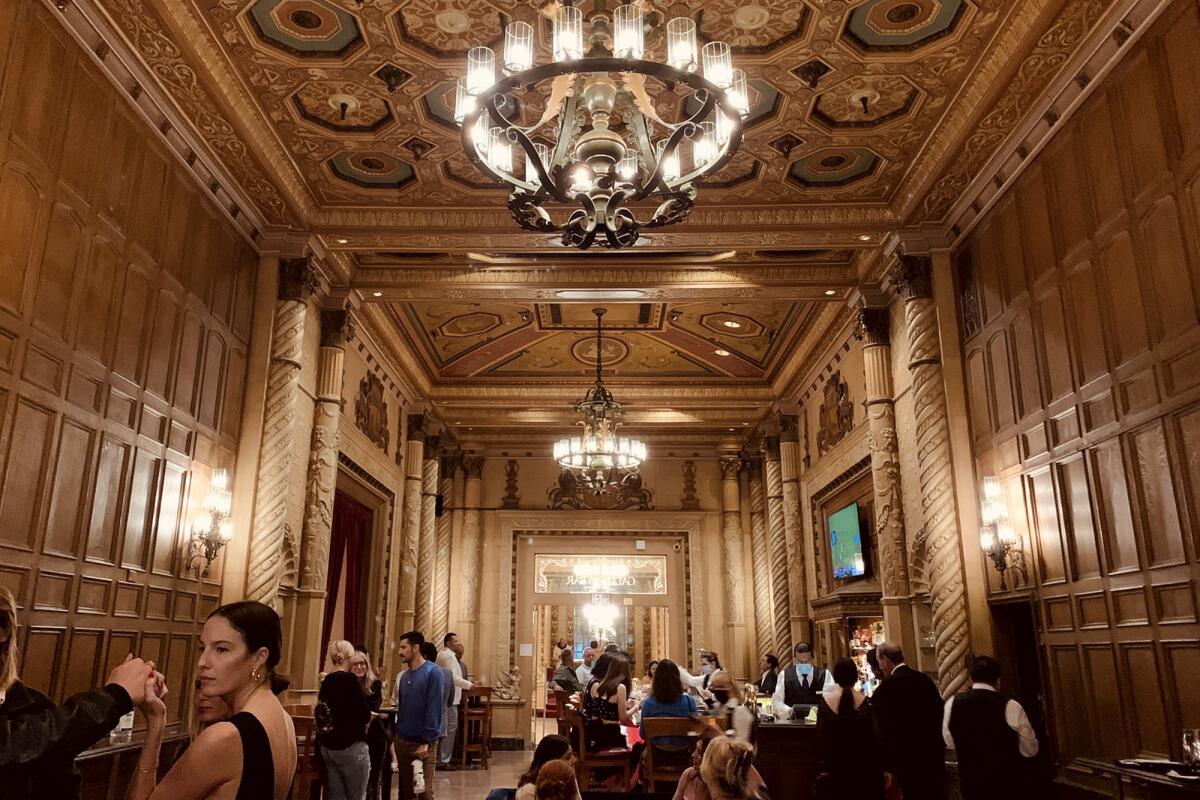
1800s: Millennium Biltmore
For a truly regal experience, stop in at the Gallery Bar and Cognac Room, where, if in another lifetime you were worthy of hobnobbing with royalty, you’d certainly be meeting the Duke for a bourbon. According to the hotel’s website, the bar is a reproduction of the royal hall where Columbus’ discovery of America was first announced to Queen Isabella of Spain.
End your evening of excess by admiring the Biltmore’s beautiful murals and magnificent chandeliers. You might even hear Lady Whistledown’s voice-over in your head, pointing out your night’s many faux pas as you stroll through the grand hallways.
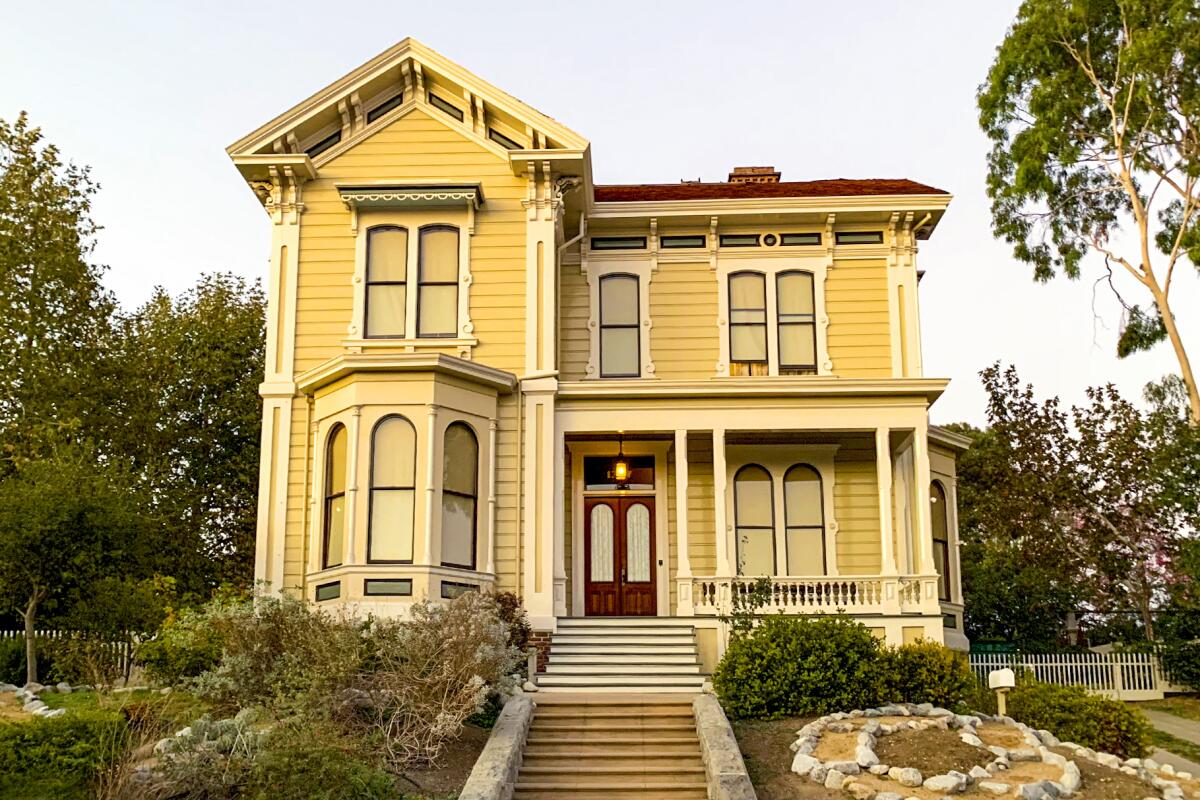
Early 1900s to 1920s: Victorian homes in Angelino Heights
The area has a storied Hollywood history: According to the Echo Park Historical Society, some of the Keystone Kops’ chase scenes were filmed on the hills of Angelino Heights. Other homes have had shining moments onscreen — you can spot them in Michael Jackson’s “Thriller” video, the WB series “Charmed” and in “Mad Men” (as Don Draper’s childhood home).
A note: People do live in these homes, so use your best and most proper Victorian manners when descending on their properties with those futuristic contraptions called “phone cameras.”
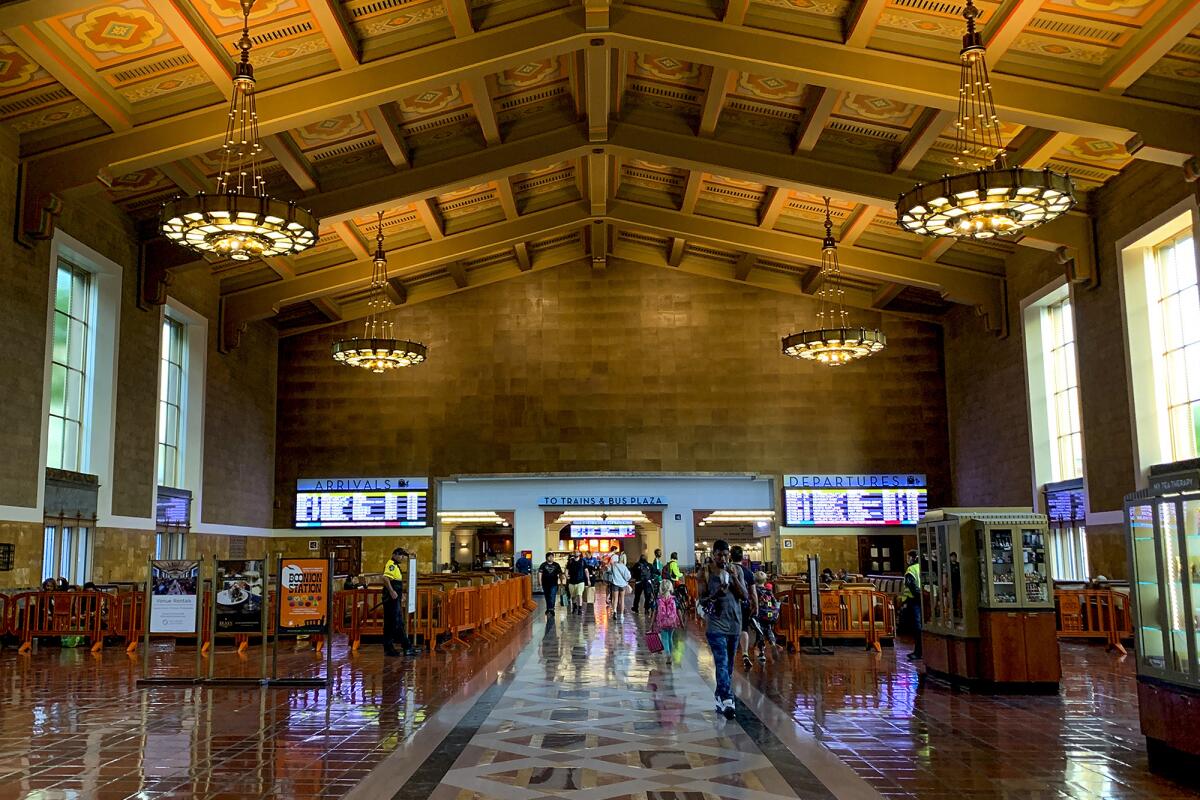
1930s to 1940s: Union Station
Not only serving as L.A.’s main transportation hub, the railway station’s dusky walnut interior, intricate inlaid tile floors and Art Deco chandeliers have made it the perfect backdrop for film noir gems such as Burt Lancaster’s “Criss Cross” and William Holden’s “Union Station.” Wander the main terminal, lit by massive 30-foot windows, back to the west end passageway to find a historic replica of an early 20th century shoeshine stand. After you’ve grabbed a newspaper and tucked it unironically under your arm, relax on one of the original wooden benches that line the impressive main hall. Finally, proceed to the recently reopened Traxx restaurant and enjoy a dirty martini while you wait to meet up with the femme fatale who’s about to hire you to murder her husband.
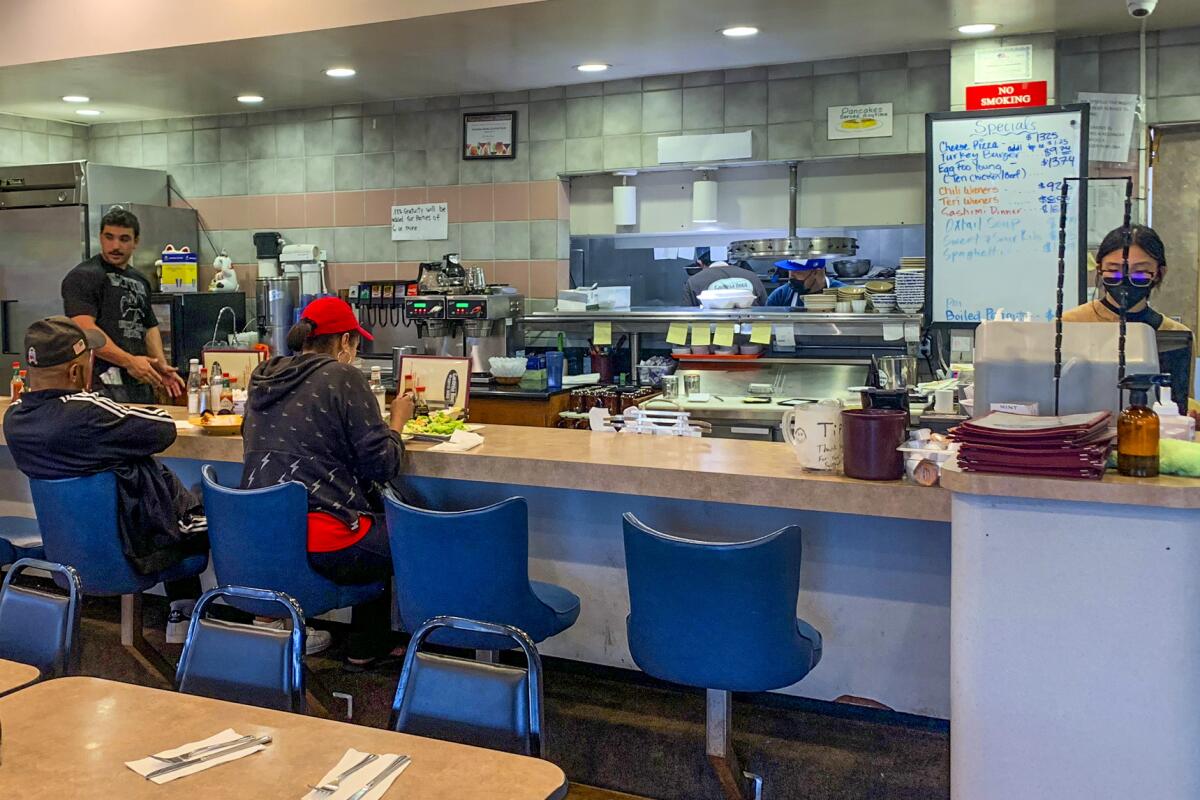
1950s: Gardena Bowl
While you listen to the soothing boom of pins scattering just outside the door, peruse Gardena Bowl’s Asian-inspired menu, offering everything from chicken katsu to kimchi fried rice, along with classic diner food like patty melts and stacks of pancakes.
Owner Frank Nakano knows how important it is to maintain the old-school feel of his coffee shop, which has been around since the 1950s. ”Through the years, we’ve added a few dishes, but the look, feel and core menu have all remained intact,” he said. “Since the beginning, we’ve always aimed to maintain the quality and aesthetic that generations of our patrons know and love.”
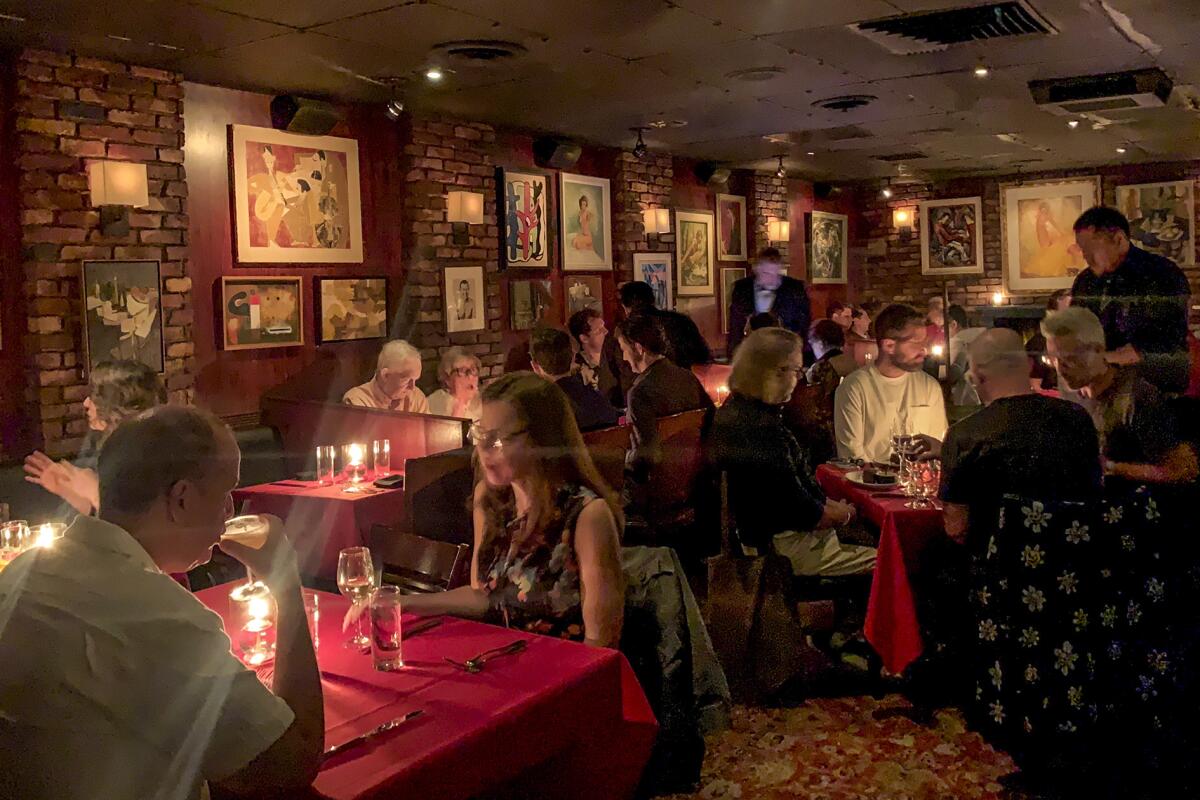
1960s: Dear John's
Patti, who handpicked all of the vintage artwork that graces the walls, tells me that maintaining the original vibe of the eatery was paramount. “Dear John’s is in a time zone of its own,” she said. “From the second you walk in and your eyes adjust to the dark candle-lit room, you’re immediately transported. Everything from the vintage ’50s and ’60s art, to the jazz, swing and big-band playlist, to the greatest hits of Continental steakhouse menus and all the classic cocktails of the time period, were designed to capture the spirit of the place Harlowe opened and Sinatra bankrolled in 1962.”
One visit to Dear John’s and you’ll see what she means. After you enter through the velvet-curtained entryway, order Frank’s Spaghetti and Clams and start in on your first cocktail, it’s easy to imagine the two actor pals sharing a meal in this very spot — and then moving to the piano to sing a boozy rendition of “My Way.”
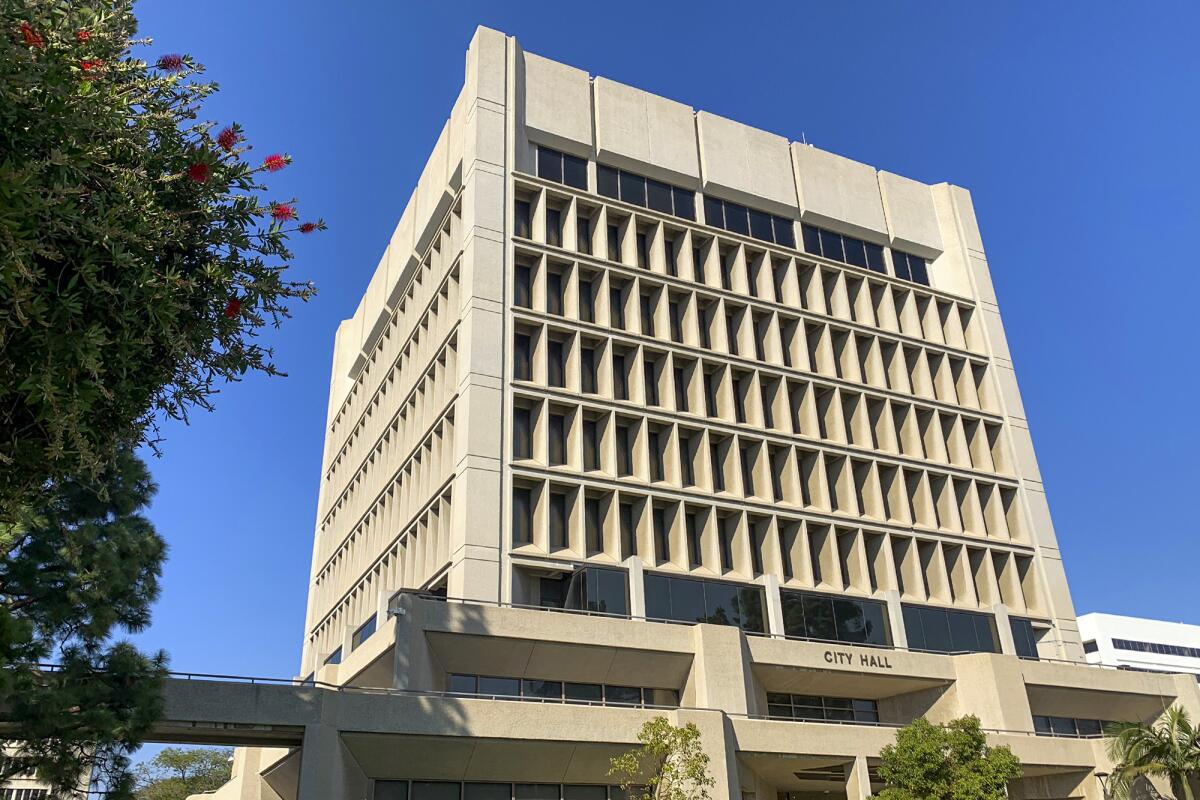
1970s: Inglewood Civic Center
Conceived and built by famed architect Charles Luckman, the sprawling complex includes city hall, the Inglewood Public Library, a fire station, a police facility and a public health center. In the stylish glass and concrete library, check out a copy of “Jonathan Livingston Seagull” and keep an eye out for the hieroglyphics-etched wall carvings by artist Tom Van Sant that face the entrance and also are displayed on an exterior stairwell column.
End your visit to the civic center in the courtyard of city hall, where you can gaze upon the sensuous “Incomplete Conch Shell,” a piece by famed California sculptor Jack Zajac.
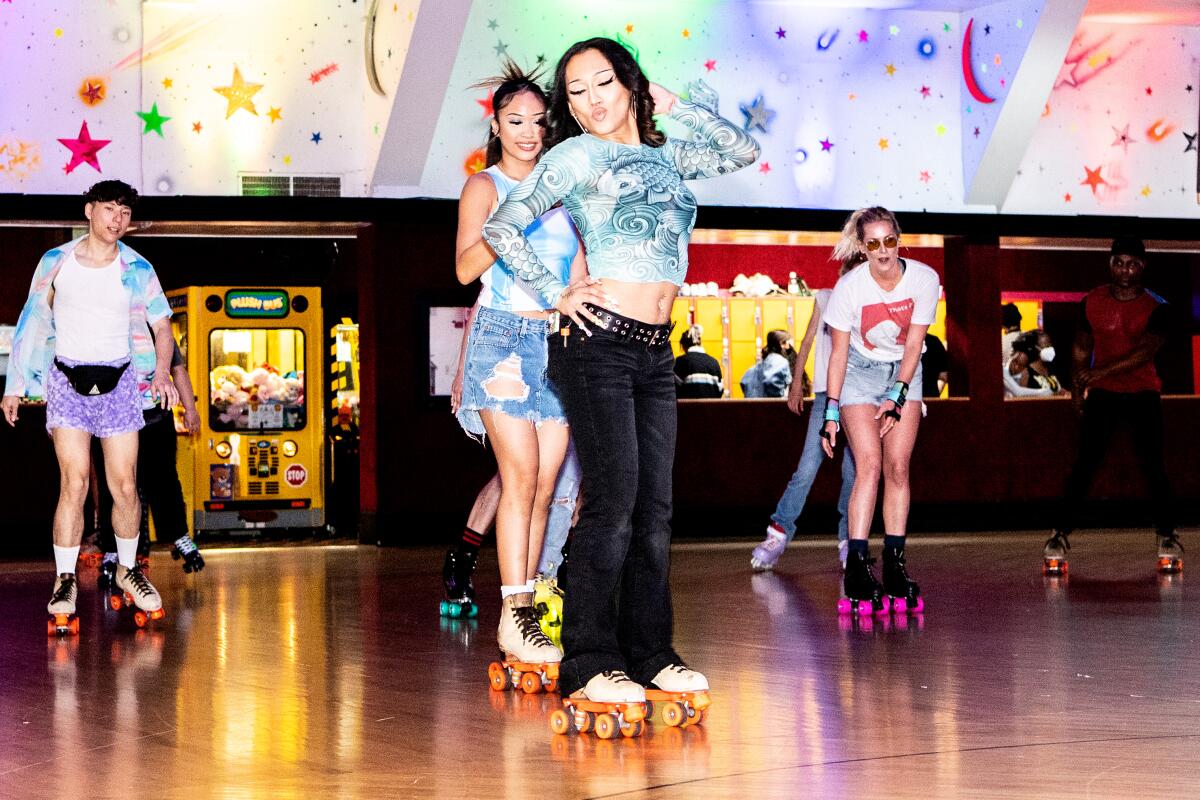
1980s: Moonlight Rollerway
If you want to recapture that decade on wheels, the perfect place to do it is at the Moonlight Rollerway. Knowing that the key to a successful skating experience is the music, the Glendale rink hosts themed nights featuring tunes mostly from the ’70s, ’80s and ’90s. (There was an ’80s Olivia Newton-John tribute skate back in August — magic.) Wednesday night is Rainbow Skate, a weekly LGBTQ event.
All the interior details — the candy-colored lights, the geometric-print rug and the mirrored ball hovering over the rink — will take you back to that totally rad era. After a good skate, make a trip to the snack bar and order up a corn dog and nachos. Just try to avoid getting any of the cheese on those new satin shorts of yours.
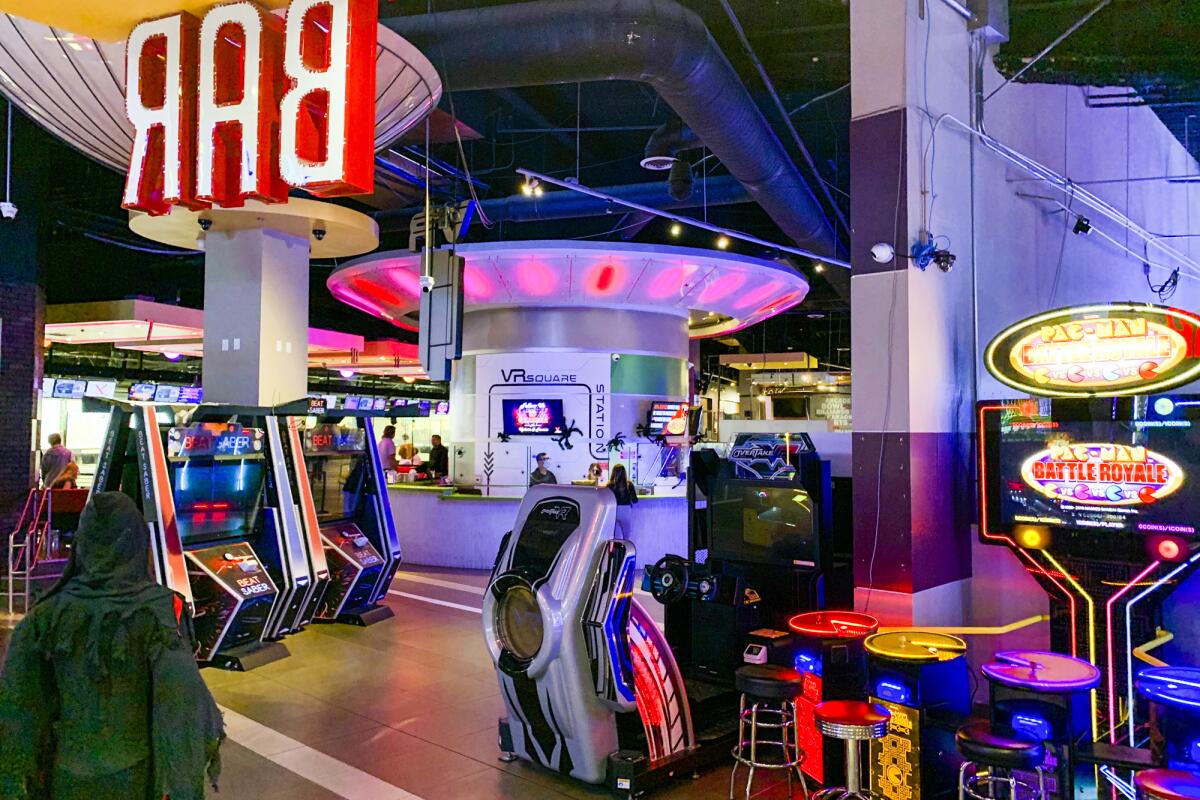
1990s: XLanes Arcade
Located in downtown Los Angeles, XLanes is part arcade, part bowling alley, and all neon and flash. While games from your youth are all there (see if you can beat your old high score at “Pac-Man,” “Pump It Up” and “Street Fighter”), there are some modern upgrades: an LED bowling alley and three karaoke rooms where you can belt out your favorite Backstreet Boys tunes.
But the place to recapture your ’90s glory days is the Bar, a vision of color-changing lights and gold railings, with a drink menu that features some standbys: a Lemon Drop martini, a mint cooler and even a cocktail named The Dude, inspired by the iconic character from the era’s hit movie “The Big Lebowski.”
Sign up for The Wild
We’ll help you find the best places to hike, bike and run, as well as the perfect silent spots for meditation and yoga.
You may occasionally receive promotional content from the Los Angeles Times.



